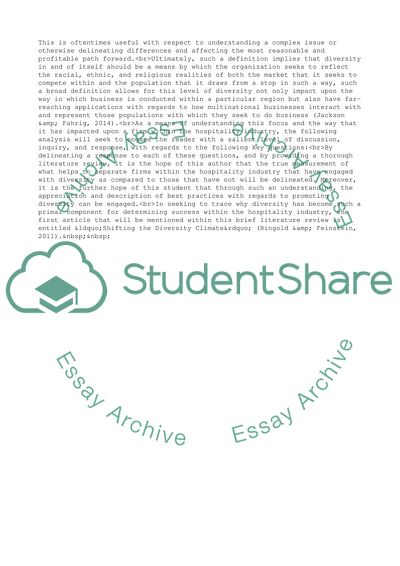Cite this document
(Managing Diversity in the Hospitality Industry: A Prospectus on Term Paper, n.d.)
Managing Diversity in the Hospitality Industry: A Prospectus on Term Paper. Retrieved from https://studentshare.org/management/1829876-an-analysis-of-management-of-culture-diversity-in-hospitality-industry-in-order-to-create-competitive-advantage
Managing Diversity in the Hospitality Industry: A Prospectus on Term Paper. Retrieved from https://studentshare.org/management/1829876-an-analysis-of-management-of-culture-diversity-in-hospitality-industry-in-order-to-create-competitive-advantage
(Managing Diversity in the Hospitality Industry: A Prospectus on Term Paper)
Managing Diversity in the Hospitality Industry: A Prospectus on Term Paper. https://studentshare.org/management/1829876-an-analysis-of-management-of-culture-diversity-in-hospitality-industry-in-order-to-create-competitive-advantage.
Managing Diversity in the Hospitality Industry: A Prospectus on Term Paper. https://studentshare.org/management/1829876-an-analysis-of-management-of-culture-diversity-in-hospitality-industry-in-order-to-create-competitive-advantage.
“Managing Diversity in the Hospitality Industry: A Prospectus on Term Paper”, n.d. https://studentshare.org/management/1829876-an-analysis-of-management-of-culture-diversity-in-hospitality-industry-in-order-to-create-competitive-advantage.


